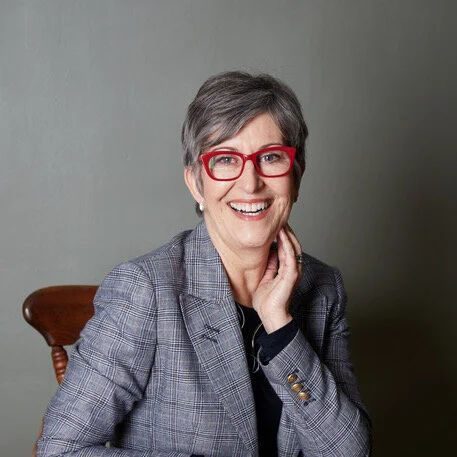What is the value of a Change Management Office?
The world of the Change Management Office (CMO) is evolving. Now, more than ever, CMOs are having to justify their value and size whilst paradoxically experiencing an unprecedented level of demand to help their organisation navigate the rapidly changing landscape.
The CMO can be a frustrating function at times to lead, but the potential is huge. The frustrations come from factors like unstable demand, lack of clarity on stakeholder needs, as well as variable and inconsistent sponsorship.
In the most extreme situations, there are ongoing challenges to the existence of the CMO which may be viewed as a low value add and non-core team. Unlike other functions, the CMO is not yet hard wired into the psychology of many organisations.
Yet the best and most successful CMOs have few of these frustrations. They are a core team that works at the most senior level of the organisations with open door access to executives. They are not under threat and do not feel the ongoing need to justify their existence.
Don’t just take our word for it…
In our Shaping the Future of CMOs report we found only 28% of CMO leaders we surveyed felt that Project Leaders and Project Managers within their organisation understood how and when to engage the CMO. Furthermore, 66% of all participants believed that there was not a high level of awareness of their CMO within their organisation. (View Part 1 & 2 of our Shaping the Future of CMOs report here)
With such a profound lack of awareness and understanding of the CMO, how can we articulate and demonstrate its value at such an important time? We’ve brought together four experts who know exactly what it takes to run a successful CMO, to help communicate the answer to “What is the value of a CMO?”.
What is the value of a CMO?
Richard Newton, Non-Exec Director at Issoria
RICHARD: There are a number of areas of value for an organisation in having a CMO. The most important one is that a strong CMO will ensure that change management is executed in the most appropriate and effective way. This in turn will result in changes being delivered effectively and efficiently, and that outcomes and benefits are fully achieved. The CMO should result in a faster path to benefits realization, and better sustainment of those benefits.
But there are other sources of value as well. Notably, a CMO should reduce the cost of change management, by cost effectively recruiting change managers, and efficiently using external partners to deal with peaks in demand for change managers. Additionally, the most advanced CMOs, by being able to show the effect of change across a whole organisation, should facilitate better executive decision-making concerning change in the organisation.
Nick Freeman, Senior Change Management Leader, CCMP™
NICK: I have seen organizations grapple with randomized occurrences of change taking place across the enterprise that lack a joined-up approach to the raft of changes taking place. Such a scenario acutely deteriorates return on investment from the change organizations seek to make. It leads to low levels of change preparedness and ultimately low (sustainable) change adoption rates.
Effective CMO’s create value through avoiding such a scenario. They work with the executive to manage the enterprise capacity to change. They support the executive to make deliberate, informed and data driven choices on how to roll out an enterprise program. The orderly programming is geared to achieving the desired levels of change adoption, and therefore return on investment. Surely, a compelling value proposition for having a CMO?
Oneka J.Cornelius, CEO and Executive Director, Convergence Solutions, LLC
ONEKA: Many business leaders don't know that a CMO, if built and aligned in their organization appropriately can assist with so much more than tactical change execution at the project level. CMOs can be designed to support transformation at the enterprise level through Change Strategy, Change Leadership and most critically…Change Sustainability. Helping senior leaders:
identify, plan and execute their organization’s global change journey
shift and improve culture to deliver their visions with insights and best practice
focus on how new processes, technology and infrastructure will be “wired” into the organization.
Ursula Erasmus, Former Director of Transformation & Change, Clinical Operations, at Roche
URSULA: Looking back over the past decade, the two large organizations (>100,000 people) I worked with both wrestled with how to best understand and manage the full portfolio of change. Integrated change planning was top of the list for both portfolio management (budget and resources) and functional managers (impact and change fatigue). Within the CMO we approached this as two sides of a coin - on the one side you have a forward looking view of the holistic change strategy; on the other you have a rolled up or consolidated view of what is planned and what is already initiated. The CMO is an invaluable resource to gather, analyze and provide data snapshots and insights.
In my experience, the CMO’s core objectives should include setting the direction for change methodology and practice; resourcing and service support models for initiatives; and defining the development path for change managers.
What challenges have you found in demonstrating value?
URSULA: I find it profoundly challenging to demonstrate value from the CMO in the standard way it is done in functions today. The CMO, although quite structured in its set-up and defined by a clear set of objectives, shares many of its measurement sets with other functions, such as the PMO or project management, Learning and Development and more. As such the CMO is often the first place cuts are made when the going gets tough. I find this short-sighted.
ONEKA: When CMOs are relegated to only working at the project/program level, it can erode the impact of what we do. In some instances, project or business leaders engage us too late to make a marked improvement in the initiative's success. Or, there is the impression that doing change management right takes too long, or costs too much. When CMO's are able to provide change impacts at the portfolio-level…we can offer insights that inform business decisions, and we become collaborative partners…not order takers.
NICK: Given the enterprise change programming role of effective CMOs, how well enabling functions work with the CMO can be a key challenge. A lack of working unity between functions like TMO, PMO, HR and the CMO can lead to disjointed, incomplete and ultimately ineffective change program design and execution. Therefore, the CMO struggles to demonstrate its true ROI focused value.
Another common challenge includes a lack of robust, data driven, change management insights from relevant metrics and meaningful measurement appropriate for the c-suite. An absence of a culture of accountability for the results from change, means a CMO is less well supported in its purpose – the achievement of ROI from change.
RICHARD: Every change initiative is unique. We all know how hard it can be to measure initiative outcomes. Providing a meaningful benchmark, when the initiatives being measured are often incomparable, is virtually impossible.
In reality, this is not just a problem for the CMO. Most functions struggle to really prove their value if requested but we tend not to ask them. We need to get CMOs into the same position.
How have you overcome these challenges?
ONEKA: I look to collaborate and partner across a number of dimensions to demonstrate value. Those dimensions include: HR, Finance, and the PMO.
Working with HR ensures that we both have a seat at the table to ensure the best interests of people are addressed. Partnering with Finance helps to identify cost impacts, and when you can show the cost of loss time, productivity, etc. and share the financial impacts…you have the ear of your clients. Finally, working with the Project Management Office (PMO) where possible always helped me to understand which critical projects were being funded, allowing me to connect with sponsors and program leadership to offer my services to scope the complexity of the work and guide their resourcing decisions regarding Change, Training, Communication and Integration talent and needs.
RICHARD: Mainly, by making the work of the CMO visible to senior stakeholders, especially sponsors of change initiatives, and the most senior operational leaders running functions that will be impacted by change. Most often this group of stakeholders has, unfortunately, experienced badly run change. By giving them visibility of the work of change managers, and by helping them to sense the improved way change initiatives run when there is strong and effective change management in place, you will find that they become active supporters of the CMO. Once you have an executive team who believe in change management and who see that the CMO is overseeing effective change management in the organisation, the requests to demonstrate the value of the CMO tend to go away.
However, there are things that can be measured, and it is worth doing this. Modern organisations expect to support decisions with data and the CMO can provide data on its performance. Good measurements include the average time to fulfil a request for a change management resource on a project, sponsor and stakeholder satisfaction with the performance of the CMO, and tracking the costs of change management.
NICK: Solid change adoption and ROI reporting metrics are critical to earn active C-Suite support. Building cohesion amongst the enabling functions through goal setting can be an effective strategy. By setting unifying goals, that include the CMO, around ‘big’ enterprise desired outcomes fosters a multidisciplinary team approach. Reward for success (and the microscope that examines failure) is equally shared to deter individualistic behaviours amongst them.
CMO’s will struggle to demonstrate value where they are treated as an isolated entity.
URSULA: So, a CMO can provide some hard data such as cost of supporting the portfolio of projects, number of projects supported, number of general learning/training sessions delivered to how many. It can also use a model like the ROI model from the ROI Institute, to measure confidence of individuals and attributable benefits. The best place to look for the expression of value may be in the Employee Survey where the questions about organizational change are answered.
The bottom line is driving an ongoing systems thinking-based dialogue. Making the explicit connections between actions and reactions, taking a close look at unintended consequences in the organization. Connecting the right dots will help you demonstrate the value of a CMO.












